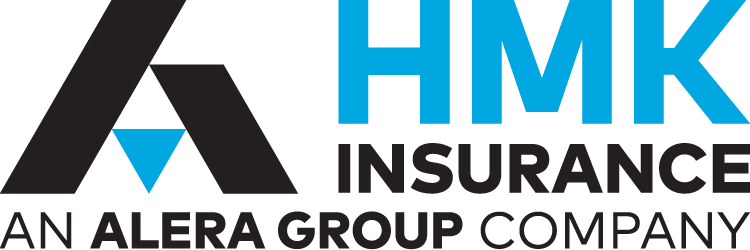 Public sector organizations increasingly find themselves in an environment of shrinking budgets, staffing shortages, growing hostility and rising inflation. Educational institutions, law enforcement agencies and municipalities operate under a microscope different from those overseeing private companies. That means contending with intricate layers of administrative procedures ― particularly in matters related to financial decisions.
Public sector organizations increasingly find themselves in an environment of shrinking budgets, staffing shortages, growing hostility and rising inflation. Educational institutions, law enforcement agencies and municipalities operate under a microscope different from those overseeing private companies. That means contending with intricate layers of administrative procedures ― particularly in matters related to financial decisions.
One significant expenditure that warrants careful consideration is insurance. Notably, public sector entities now confront the dual challenge of operating with reduced financial resources while grappling with escalating inflation and Property Insurance rates.
To navigate these complexities, adopt a proactive stance towards risk management and partner with a savvy broker.
Reviewing the Market on Insurance for the Public Sector
Except for Property Insurance, the property and casualty market has stabilized for public sector accounts. Here are other notable trends, as discussed in Alera Group’s 2023 Property and Casualty Market Outlook:
- “More rigidity in underwriting. Underwriters have clear criteria for the public entities business they want to write. If a risk fits in that box, insurance companies will compete to write or renew the business. If an account falls outside the box, there isn’t much flexibility.
- “Growing hostility towards public officials. Local officials are on the front lines, and increasingly they’re being exposed to escalated harassment, threats and violence. A recent National League of Cities (NLC) study showed that 87% of local officials surveyed observed increased attacks on public officials in recent years, while 81% reported having experienced harassment, threats and violence. As a result, public entities need to focus on ensuring the safety of officials, learning to manage public discord and building trust with their constituents.
- “The threat of violent events. According to the National Safety Council, incidents of workplace violence have begun creeping up in the last decade. Data from the Bureau of Labor Statistics shows the rate of injury incidence for local and state government workers is significantly higher than those of workers in other industries. This is increasing the pressure on public entities to utilize risk mitigation strategies and insurance for protection.
- “Jury awards against public entities are on the rise. Some attribute this to a loss of faith and desire for change that motivates people to shift their trust to things they can control, such as verdicts.
- “Immunity defenses that may have once protected certain municipalities may no longer be available due to changes in legislation or the legal landscape. For example, in states with tort protection for government entities, plaintiffs are seeking to bypass state courts and create pathways to federal courts.
- “Nuclear verdicts are driving the need for higher limits. At the same time, increasing losses are leading insurers to withdraw from this coverage or cut back on the limits they’re willing to offer. Public entities requiring high limits will need to build layers of coverage through multiple insurers.
- “Insurers are focusing on property valuations. Public entities must be prepared to share their process for how valuations are determined and maintained.
- “The need to address IT security. Public entities are vulnerable to cyberattacks due to the amount and sensitivity of data they maintain and a lack of IT security resources. Larger and mid-size cities are beginning to hire chief data officers who can address data security and digitize administrative operations for greater efficiency and better customer experience.”
Expect similar trends through the fourth quarter, with stabilized pricing for Cyber Liability and a deteriorated outlook for Property Insurance.
Pricing Stabilizes for Cyber Liability Insurance
Pricing, capacity and underwriting have improved for Cyber Liability Insurance. Previously, public entities encountered substantial fluctuations in premium, often with double-digit increases and spikes as high as 35%. However, recent renewals mark a departure from the significant increases seen in past years, and new coverage pricing indicates a trend toward rate stability.
Public entities that proactively implemented cyber security measures and adopted multifactor authentication to safeguard sensitive and personally identifiable information (PII) are reaping the rewards of this positive shift. Conversely, those lagging in cybersecurity practices face challenges in obtaining coverage or adequate liability limits.
In a significant risk management development, the Biden administration recently held the federal government’s first-ever cybersecurity summit, focusing on the growing menace of ransomware attacks targeting public schools. This summit aimed to facilitate discussions on lessons learned from past incidents and examine best practices for safeguarding educational institutions. Findings revealed that numerous schools struggle with meager cybersecurity budgets and limited staffing resources, underscoring the urgency of bolstering digital defenses.
Property Insurance Volatility
One of the most pressing issues faced by public sector entities is the significant increase in Property Insurance premiums. Some public entities have experienced double- and even triple-digit premium increases. While these surges can be attributed to various factors, including inflation and increased construction costs, they pose a significant financial burden on public entities. It’s crucial for insurance buyers to understand these dynamics and prepare for potentially higher Property Insurance premiums in the coming years.
Demand exceeds supply ― as Alera Group reported in our 2023 Property and Casualty Market Update ― and insurance carriers are hesitant to provide coverage at affordable rates for organizations with frequent or severe claims. This underscores the importance of effective risk management and loss prevention strategies, such as employee training, facility inspections, adherence to state-mandated regulations and property appraisals to verify insurance-to-value. Engaging in best practices can help mitigate risks, enhance safety and improve insurability.
The Surge in Climatological Disasters
The National Oceanic and Atmospheric Administration (NOAA) reports a staggering increase in billion-dollar-plus disasters, with 23 events occurring in the U.S. so far this year. The surge has set a record for weather and climate disasters, signifying a significant shift from the not-so-distant past, when catastrophic events such as wildfires and extreme weather were considered exceptions. In the previous five years, ALM PropertyCasualty360 reports, the national average for claims from catastrophic weather events was considerably lower, at $8.1 billion per year.
The shift has far-reaching consequences, particularly for insurance.
The exorbitant amount paid in climate-related claims affects insurer capacity and reinsurance markets. Ultimately, there’s a direct correlation between these disasters and every Property Insurance buyer, especially those in high-risk areas.
Case Studies
The cause of the Maui wildfires, estimated at $4 billion-$6 billion in economic losses, is still under investigation. Insurance Journal reported that the utility company identified Lahaina in the summer of 2022 “as one of the priority areas for prevention and mitigation” of fire but noted that the “request remains pending with the regulator.” Insurance Journal later reported, “The official investigations will aim to determine the cause of the fire and review how officials handled it.”
While official investigations to determine the cause of the fire and review how officials handled it are still underway, the county sued the for-profit utility, adding to a pile of lawsuits against the utility, the county and the state. The Maui disaster highlights the critical need for effective planning, collaboration and communication among public and private companies to protect communities.
Public sector entities face serious challenges beyond climactic events.
Take the case of Jackson, MS, which this year experienced a $2 million Property Insurance increase. This was the result of Liberty Mutual non-renewing the city’s policy due to a company-wide readjustment of municipal accounts and Jackson’s “failure to implement the risk control measures” recommended by the carrier. A new carrier offered coverage that exceeded the Jackson City Council’s budget by $2 million, putting additional financial strain on the city.
Planning with Limited Resources
Funding has always been a challenge in the public sector, and rising inflation and insurance costs exacerbates the situation. With limited resources, tough decisions must be made.
As Dwight Eisenhower, Supreme Allied Commander of the Allied Expedition Force during World War II and a two-term U.S. president, was fond of saying, “Plans are nothing; planning is everything.”
When working with limited resources, start with these four steps:
- Assess overall exposure and vulnerabilities;
- Break them into manageable pieces;
- Prioritize actions;
- Create both short- and long-term risk management plans.
For effective risk management, it’s advisable for public sector entities to engage in proactive short- and long-term planning.
Exploring Alternative Insurance Options
To combat the increasing costs and challenges associated with traditional insurance, many public entities pursue alternative options such as captives and risk pooling programs, which can provide leverage to control insurance costs and coverage.
Some states and local public entities offer regulated pooling programs, with dedicated risk management departments and long-term loss control. This may include certified inspectors who visit onsite to review specific areas such as playgrounds, stadiums, laboratories and more. Members may receive compliance reports and SWOT (strengths, weaknesses, opportunities and threats) analysis from the risk pool managers. Insurance carriers may also offer additional risk management resources.
Finding a Savvy Broker
Public sector entities face many unique challenges, and the right insurance partner can make all the difference in managing risks effectively and ensuring financial stability. Consider these four factors when searching for an insurance broker:
- Vested interest: Search for a broker who demonstrates a genuine vested interest in your organization. They should be willing to invest the time to understand your day-to-day operations thoroughly.
- Comprehensive assessment: The ideal broker will take a deep dive into your operations and daily activities to identify your strengths and areas that need improvement.
- Risk analysis: After the assessment, a knowledgeable, engaged broker will offer insights that may not have been on your radar and identify areas where additional value can be provided. Such a broker also will help educate and manage expectations about challenges such as the deteriorating property market.
- Tailored solutions: From elementary schools to city hall, every client is unique. Find a broker who customizes solutions that align with your organization’s policies and protocols.
It’s crucial for public sector entities to partner with brokers who can adapt to changing circumstances. By choosing a broker with a vested interest, keen assessment skills and a commitment to building a comprehensive insurance program, public sector entities can better face the challenges of limited resources while mitigating exposures.
For a broader look at navigating insurance market conditions, read Alera Group’s September 2023 Property and Casualty Market Update. The report provides valuable information on factors driving the current P&C market, with analysis categorized by lines of coverage, commercial as well as personal.
About the Author
Rhonda Ross
Sales Executive
Propel Insurance, an Alera Group Company
Rhonda Ross has two decades of extensive expertise in insurance and risk management, with a focus on tailoring property and casualty programs for the unique needs of public sector clients. Rhonda collaborates with her clients to understand their exposures and operations, and guides them through a strategic decision-making process to prioritize coverage needs.
Contact information:





